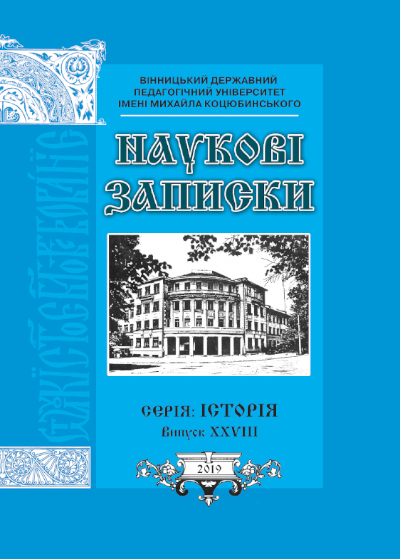Abstract
The current stage of the spiritual development of the organization is determined by the strength of the initiative to the Orthodox culture in the scientific medium. An animal to the church spіvu, to the wide representation of the musicians in the Orthodox cultures and the national mystics in the publications in the Christian and Orthodox themes. Orthodox singing throughout its centuries-old history was an extraordinary phenomenon in church culture.
The main corpus of texts of the Ocantine Octoise has fallen in the IX-X tables in the results of constantinopolitan schools and the Armenian grammar school. The main texts of the Byzantine Octoecology were formed in the 9th-10th centuries. It was the result of the work of the Constantinople school, which studied Byzantine hymnography.
The Byzantine church singing system was adopted and rethought by the Church of the East. Accordingly, the system of singing for eight melodies was deeply learned. In the Eastern Church during this period, znamenny singing attains perfection and forms a single musical system.
The author of the article «Formation of the Byzantine church voice system in the VIII-X Centuries: Historical and Cultural Analysis» Irina Shvets views the Byzantine Osmoglasnik in the context of a unified liturgical singing system. Based on indepth studies on the history, semiography and paleography of church singing, the author considers the phenomenon of Byzantine osmoglasiya not only in the musical aspect, as a set of spiritual chants, having a certain compositional, melodic-rhythmic and harmonic specificity, but also in historical, in terms of becoming and transformations, which the system underwent through its centuries-old history.
References
Апостол. Київ: Свято-Покровський Голосеївський монастир, 2014. 736 с.
Гарднер И. А. Хоровое церковное пение и театральность в его исполнении // О церковном пении: сборник статей / Редактор-составитель: О. В. Лада. Москва: Ладья, 2001. 251 с.
Красовицкая М. С. Литургика. Москва: ЛитРес, 2018. 225 с.
Никольский А. В. Краткий очерк истории церковного пения в период I-X веков. http://www.seminaria.ru/chsing/nikol_ocherk.htm
Октоїх. Київ: Київська митрополія УПЦ, 2011. Т. 1, 712 с.
Петрос П. Святой Иоанн Дамаскин как литургист-гимнолог. Москва: Ладья, 2016. 218с.
Трубачев С. О церковном пении. Москва: Директ-Медиа, 1997. 118с.
Филарет, архиепископ. Исторический обзор песнопевцев и песнопения Греческой Церкви. Москва: издательство Сретенского монастыря, 2013г. 260 с.
Fragmenta Chilandarica palaeoslavica. A.: Sticherarium: Codex monasterii Chilandarici: Phototypice depictus. Prepared by R. Jacobson / Monumenta Musicae Byzantinae (MMB). Vol.V(A). Copenhagen: 1957. 330p.

This work is licensed under a Creative Commons Attribution 4.0 International License.
Copyright (c) 2019 Iryna Shvets





